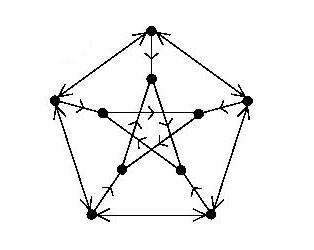 login/create account
login/create account
Guide for creating/editing content
Step by step instructions
| Field | Guidelines | ||||||||
| Title | The title used by the Garden for reference purposes. | ||||||||
| Statement | A concise statement of the conjecture. Please keep this short, even at the cost of postponing essential definitions to the body. | ||||||||
| Importance |
|
||||||||
| Authors | The authors of the conjecture in a list separated by semicolons. Please use the format Lastname, Firstname I., and please pause to let autocomplete "guess" author names to prevent multiple copies of the same author. | ||||||||
| Area » Topic » Subtopic | The subject the open problem belongs in. Every problem must be assigned an Area, but problems need not be assigned a Topic or Subtopic. Please assign your problem the most reasonable classification possible, and contact us ("Contact" button in upper right hand corner) if the appropriate subject does not exist. | ||||||||
| Keywords | key words used for reference purposes. Separate by semicolons. | ||||||||
| Recommended for undergrads | "yes" if the problem looks suitable for an undergraduate and "no" otherwise. | ||||||||
| Prize | If there is a prize for this conjecture, a description of it, and who offered it. | ||||||||
| Status | "open" if the problem is unsolved, and "solved" otherwise. If the problem is solved, indicate the solver and reference for the paper in the extra field. | ||||||||
| Discussion | A discussion of the problem. This is a LaTeX field where you can use all of the commands in the table below. We encourage you to use Wikipedia for definitions of standard terms. If Wikipedia is lacking here, update it! | ||||||||
| Related Problems | A list of related problems. | ||||||||
| Bibliography | A bibliography for the problem. We indicate original appearances of the problem with an *, and provide links to the paper and to MathSciNet when possible. |
Supported LaTeX
| Command | Appearance |
 emph{italics} emph{italics} |
italics |
 textbf{bold} textbf{bold} |
bold |
$e^{i \pi}  in {\mathbb Z}$ in {\mathbb Z}$ |
 |
$$e^{i \pi}  in {\mathbb Z}$$ in {\mathbb Z}$$ |
 |
 begin{problem} begin{problem} $P = NP?$  end{problem} end{problem} (also works for conjecture, question, theorem, proposition, observation, statement, lemma) |
Problem
 |
 begin{enumerate} begin{enumerate} item line item line item plane item plane end{enumerate} end{enumerate} |
|
 begin{itemize} begin{itemize} item triangle item triangle item square item square end{itemize} end{itemize} |
|
 begin{proof} begin{proof}induction on $n$.  end{proof} end{proof} |
Proof induction on
 . . |
 begin{definition} begin{definition}$  zeta(s) = zeta(s) =  sum_{n=1}^{ sum_{n=1}^{ infty} infty}  frac{1}{n^s}$ frac{1}{n^s}$ end{definition} end{definition} |
Definition
 |
Note: LaTeX includes the files amsmath, amsfonts, amssymb, latexsym, and mathrsfs.
Links
| Link to | Command | Appearance |
| Wikipedia |  Def[graph]{graph theory} Def[graph]{graph theory} |
graph (links to the Wikipedia page for graph theory) |
| Open problem in the Garden (by number) |  OPrefnum[5-Flow Conjecture]{126} OPrefnum[5-Flow Conjecture]{126} |
5-Flow Conjecture (links to the open problem with node 126*). |
| Open problem in the Garden (by name) |  OPref[5-Flow Conjecture]{5_flow_conjecture} OPref[5-Flow Conjecture]{5_flow_conjecture} |
5-Flow Conjecture (links to the open problem whose url ends with 5_flow_conjecture). |
| General external link |  href[link to google]{http://www.google.com} href[link to google]{http://www.google.com} |
link to google (links to http://www.google.com) |
| The ArXiv |  arxiv[The strong perfect graph theorem]{math.CO/0212070} arxiv[The strong perfect graph theorem]{math.CO/0212070} |
The strong perfect graph theorem (links to the ArXiv paper math.CO/0212070) |
| MathSciNet |  MRhref{0579077} MRhref{0579077} |
MathSciNet (links to the MathSciNet Review MR0579077) |
* To find the node number of an open problem, either enter the name of the problem in the "Related Problems" field when adding a new open problem (this is especially easy since the computer will use autocomplete to "guess" the problem for you), or click to edit the problem, and then grab the node number from the url.
Images
- First, upload the image(s) (using "File attachments" at the bottom).
- Then you can use
 Image{file name} or
Image{file name} or  Image[alternative text]{file name}
Image[alternative text]{file name}
Example:  Image[A bidirected orientation of the Petersen graph]{bi_pet.jpg} yields
Image[A bidirected orientation of the Petersen graph]{bi_pet.jpg} yields 

 Drupal
Drupal CSI of Charles University
CSI of Charles University